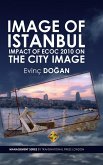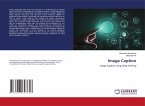Body comes from the Latin Corpus and Caecus means blind in Latin. Corpus Caecus would then translate "blind body", but this combination of words in this order corresponds in Latin to "to return". I gave this title to this research because in making the historical review of the changes that human perception has undergone, I found that the gaze has deteriorated, as has the magic of images and the notion of the body as something sacred and harmonious, which made the construction of the world very distant from what it is today. How is it possible that there was magic and we have lost it? I began to ask myself how I could recover something of that which has been forgotten and I recognised the importance of going back to the events of the past and gathering elements to rethink and re-signify my own relationship with the body and with the image. What was the body for others, and what did they see in images before? What is the body today? And what do we see? These questions are the basisof the artistic production that complements this research.
Bitte wählen Sie Ihr Anliegen aus.
Rechnungen
Retourenschein anfordern
Bestellstatus
Storno








